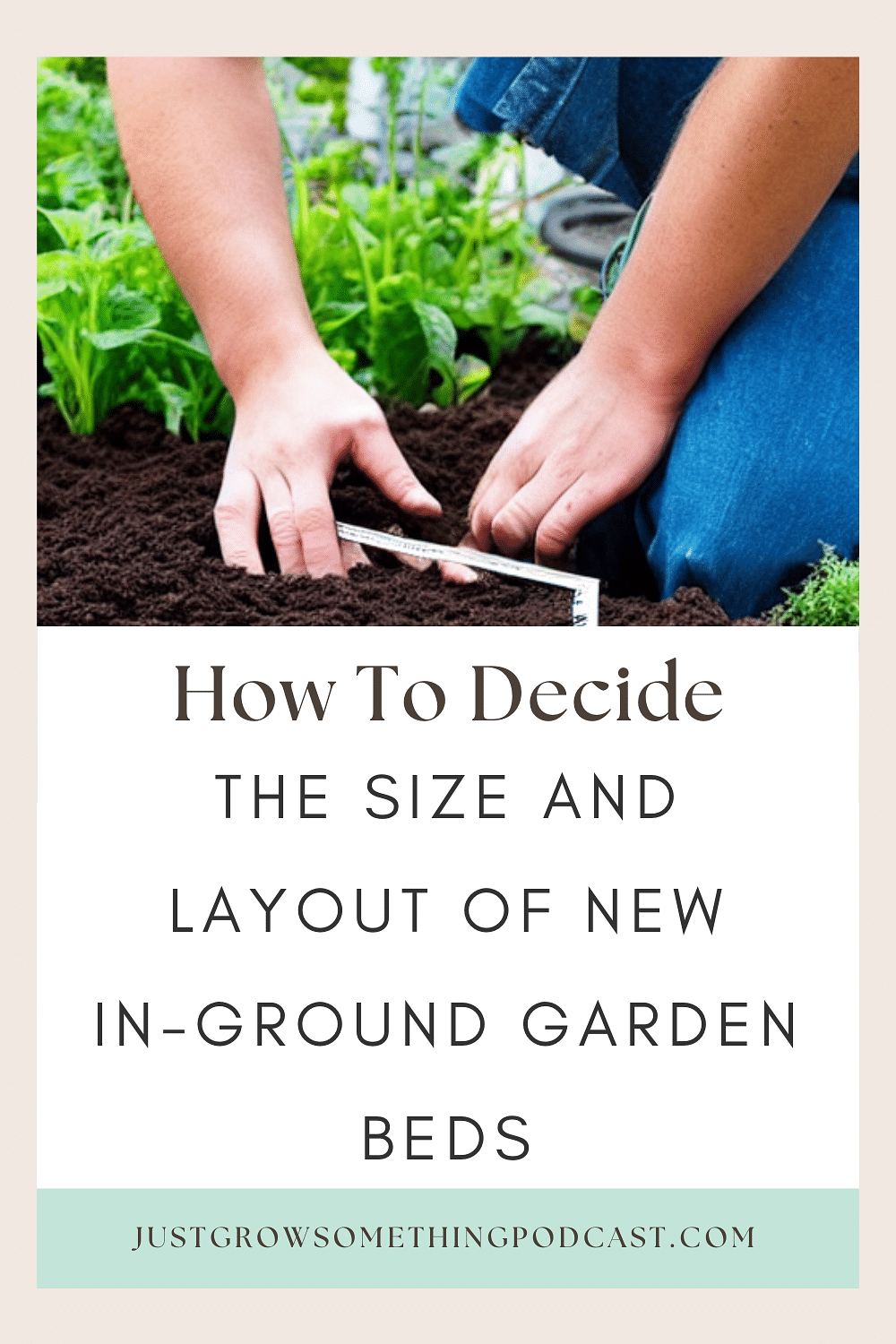
I spent years trying different widths of in-ground garden beds to find just the right size that was functional for the plants and the gardener. There were definitely some beds that worked much better than others and all that trial and error helped me decide on what is best for me. But every gardener and every space are different. So, what should you consider before deciding on a width and length of a new in-ground garden bed? (Wondering about raised planter dimensions? Check this article: How to Decide Raised Planter Bed Dimensions )
 What are the dimensions of your overall space?
What are the dimensions of your overall space?
You may not want to divide your garden into fixed bed widths if you are working with a small space. Keeping everything as “plantable” area and making your walkways based on what crops you’re growing each season will likely give you more area to work with.
If you have a large gardening space, however, you may want to divide into permanent beds with permanent walkways. Having permanent beds with permanent walkways helps with keeping weeds down in the walkways. It also keeps the soil from being compacted in the planting areas since you’re not stepping into the beds frequently.
It’s also more economical to add amendments directly into defined beds. Plus, if you use landscape fabric for weed control, that fabric is a fixed width. This may be a key factor in deciding how wide your beds will be.
What tools do you use in the space?
If you use row covers, frost cloth, landscape fabric or other weed barriers, trellises, or anything that is a defined width, it may be more convenient to pick a bed width that is easy to use with the widths of these tools.
Do you bring carts or wheelbarrows into the space? Will you need room between beds for that?
Do you have specific tools you use in the planting spaces that are a certain width? Equipment like tillers are a fixed width and it may be easier to choose that same fixed width as your bed size so you only need to make one pass back and forth. This further helps to clearly define your beds, too.
What are your most commonly grown crops?
If you tend to grow the same vegetables year after year, you might base your bed widths on the way those crops grow or are planted. Corn, for example, should be planted in blocks for pollination. Broccoli grows very wide leaves and needs some extra space. Vining crops (cucumbers, winter squashes, melons) will need to be trained to stay in their space and out of walkways if not trellised. Climbing crops like peas and pole beans need more vertical space than horizontal, so narrower beds in this instance might be better so you’re not stepping into the beds as often.
Also consider how often you use trellises in these spaces, especially if you move them from one bed to another when you rotate crops.
Consider your gardening style
How wide the bed is will affect your ability to reach things in the middle of the bed. Walkways on each side make it easier to reach everything, so wider beds are possible. Too wide and you’ll be stepping into the beds to harvest and that can compact the soil.
Also pay attention to obstructions. If some of the garden is up against fencing or a building and you’ll only have access from one side, that may mean you make those beds narrower. Beds where you’re reaching up to harvest from trellises may require you to step in the bed to reach up high, compacting the soil if the bed is too wide.
And if you or others gardening with you have back problems or other physical issues, making a bed too wide can exacerbate that by causing you to have to reach too far across to reach the center of the bed. Be sure you’re thinking about how you work in the beds. Too wide and it makes it difficult to get to the center of low-growing crops. Too narrow and you may eliminate the ability to grow crops that spread out.
Irrigation considerations
Finally, consider how you plan to water your garden. If you’re using drip tape, how easy is it to lay this out in a super wide bed?
Are you using low-lying sprinklers? A narrower bed may allow for runoff into the walkways, making them less efficient. If you’re hand watering, can you reach the center of the bed easily with a heavy watering can or hose without straining?
Recommended widths
Standard bed widths in the U.S. are generally 24”, 36”, 42” and 48” (50cm, 91cm, 1.06cm, 1.22m).
Why these widths? Most garden plant spacing recommends spacing in-between rows in increments of 6”: 6”, 12”, 18”, 24”, 30”, or 36”. So, it makes sense to create our beds in similar fashion to fit ‘x’ number of rows with proper spacing and not a lot of extra room that goes wasted or unused.
You can certainly create beds that are different widths for either specific purposes or because of their location. For instance, beds against a fence or building may be different widths than your beds designed to hold trellises season after season. You may have beds designed for specific crops, like leafy greens, that are generally only used for those types of crops.
Widths for new in-ground beds should be based on the specific gardening space and the gardeners working within them, not just a blanket recommendation. Taking these points into consideration before breaking ground will get you one step closer to making your garden space work best for you.
Need more info? Consider this podcast episode: Ep. 129 - Determining New Garden Bed Dimensions
Your Friend in the Garden,

